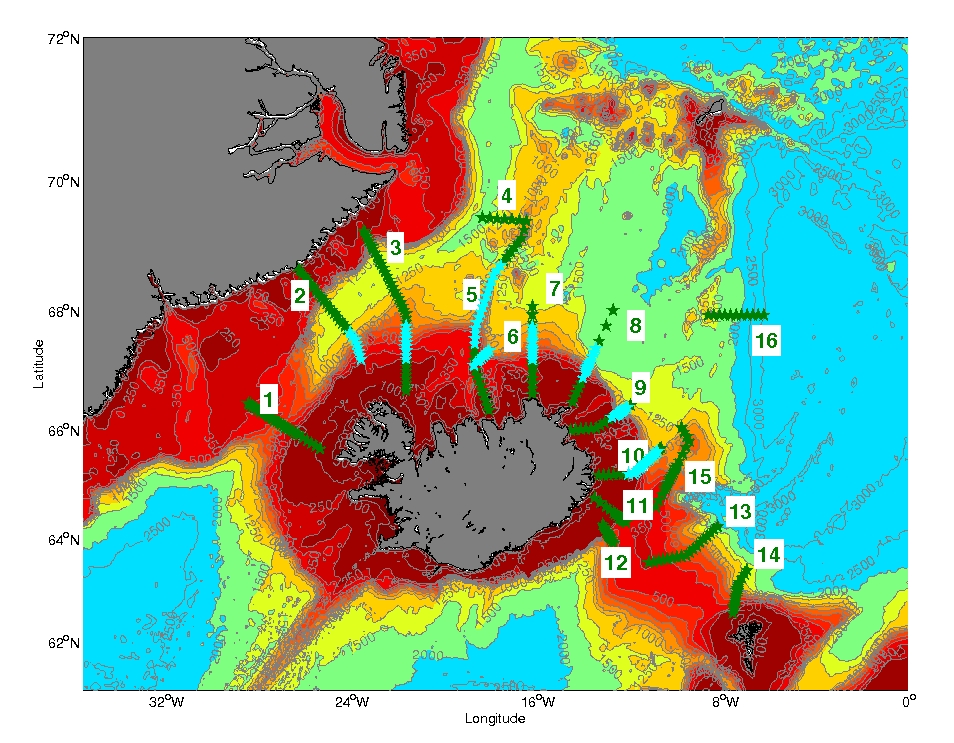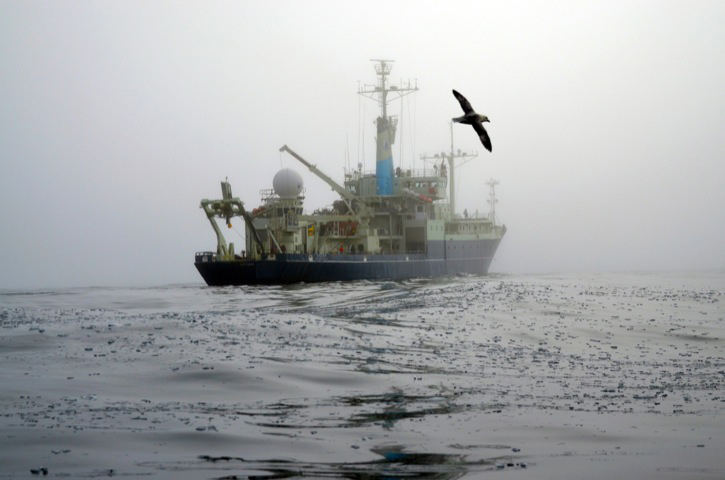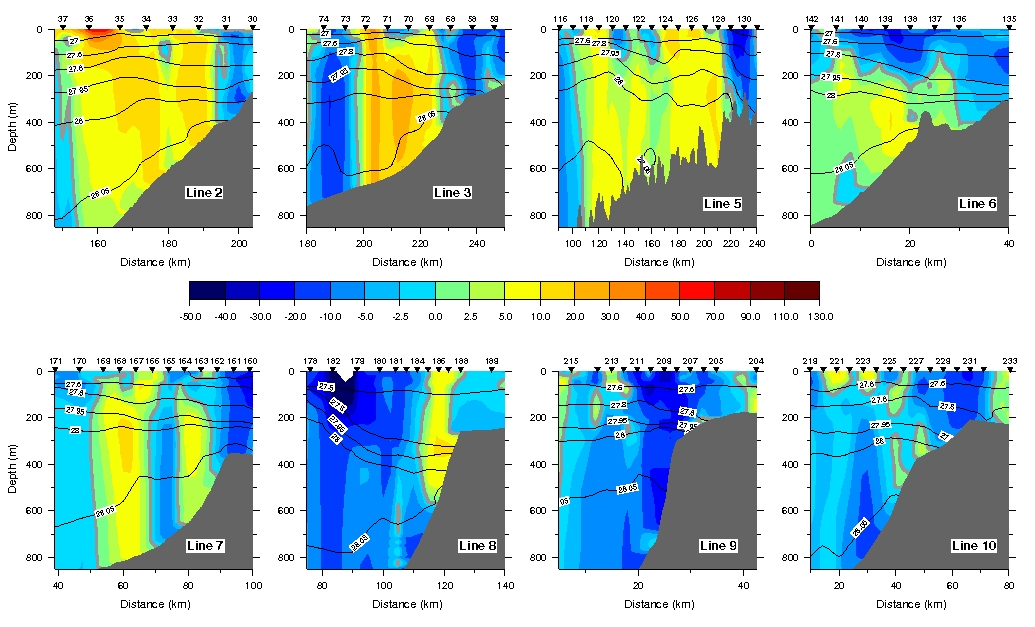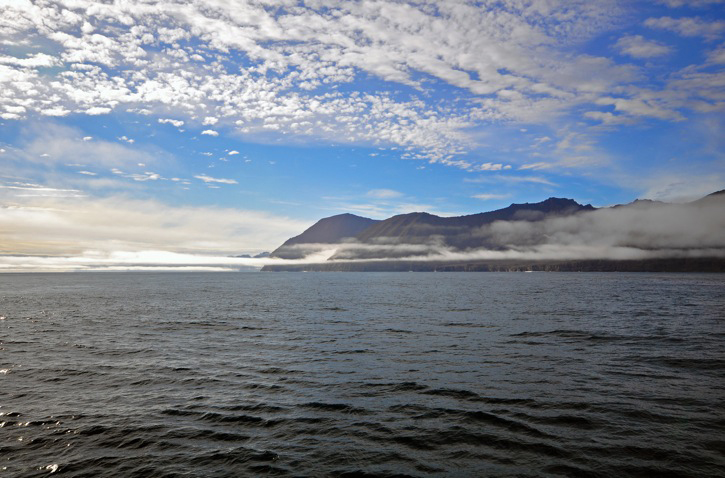September 22, 2011Scientists tend toward professional, if not temperamental, prudence, skepticism. There’s a running joke between Bob and me about our very pleasing collaboration. When I finish one of these essays that relate to science, I pass it to him for approval. He qualifies every categorical statement, adding, “usually,” “typically,” “mostly,” at least sometimes. But there is a fundamental point here. In science, the highest form of certainty is the theory; after all, new data may come to light or old data may be reinterpreted, a point the fundamentalists and the ideologues have exploited to say, for instance, that evolution is “just” a theory. However, Bob and Kjetil are prepared now to claim unequivocally that they have affirmed their hypothesis. Before we get to how and why, it’s probably worthwhile to restate the hypothesis.
Most ocean currents flow from somewhere toward somewhere else. They have no beginning or ending, except insofar as humans have named them for their own ease of reference, but are parts of a continuous circulation. In this the North Icelandic Jet is different. It does not flow from elsewhere over the top of Iceland thence into the Denmark Strait. Instead, it is formed right here in the waters on the north slope of Iceland. Here’s how per the hypothesis: A branch of the warm North Atlantic Current—the North Icelandic Irminger Current (IC)—flows northward transporting some one million cubic meters of warm water per second up through the Denmark Strait and then bends to the east over the top of Iceland. There the IC dies out, devolving into eddies that spin energetically out into the Iceland Sea. Relinquishing its heat to the cold Arctic atmosphere, the once warm water grows dense and slips beneath the surface joining a large reservoir of cold water in the Iceland Sea. So we have a quantity water moving north; and now we need to think circles. Nature loves circles because circles conserve mass. If a quantity of water moves north, then an equal quantity must move south. The laws of physics so require. As water from the cold, dense reservoir “replaces” the Irminger Current, it sinks—becoming the North Icelandic Jet—and then flows south into the Denmark Strait. That’s the hypothesis this cruise was set out to test.
The Knorr moves off to the Blosseville Coast of Greenland. © Rachel Fletcher To verify the hypothesis, Bob and Kjetil needed to demonstrate two things. One, that the NIJ water did not flow from somewhere else. And two, that if the current was formed right there on the northeast slope of Iceland and then flowed southwestward into the Denmark Strait, it had to disappear at some nearby point “upstream.” As to the first point, please see Figure One, the map of Iceland. Note CTD sections four, fifteen, and sixteen that cover other likely places the current could be flowing from. In these, Bob and Kjetil found no traces of the NIJ. One down. Now, as to the second point, please see Figure Two. These eight panels, which are generated from CTD and ADCP data, depict current velocity. The “line numbers,” two through ten refer to the CTD stations on Figure One. The yellow color represents the NIJ itself. Notice that, beginning in the Denmark Strait, Line 2, the current is zipping right along. Along Line 3, it lessens in velocity; and it continues to diminish along Line 3 through Line 8. By Lines 9 and 10, on the northeast of Iceland, it is gone.
The evidence could hardly be clearer: Hypothesis confirmed. Sounds easy, doesn’t it? However, to produce this end result, required countless hours of combined intellectual effort by four physical oceanographers, including the Icelandic scientists who noticed the “mysterious current” in the first place, Bob and Kjetil, who confirmed its existence in 2008 and now in 2011 found its origin, the work of modeler Michael Spall, and separate cruises. Further, if oceanographic data were water itself, Bob and Kjetil would be neck deep in it. They have loose-leaf binders full of velocity data from lowered ADCPs and shipboard ADCPs, plus that from 335 separate CTD casts. Further, the discovery of the North Icelandic Jet and now of its origin introduces a new set of questions—most prominently, what causes the NIJ to flow into the Denmark Strait instead of the other direction. To answer that and a few of the other questions will require more fieldwork and modeling.
So what does it mean, all this to-do about a relatively small current in a remote part of the foggy, stormy Nordic Seas north of the Arctic Circle where almost no one goes? The oceanographer’s job, like that of most other Earth scientists, is to learn and to explain how nature works. That’s it. But that’s a lot. That’s what Galileo, Newton, and Darwin did, but such “big” discoveries have already been made, at least theoretically. More modest questions about how the world works remain unanswered, and in the ocean many remain. Further, the dynamics of these northern seas are particularly important in the light of climate change. The North Icelandic Jet stands as a new mechanism by which dense water is transported southward to complete the north-south circulation on which nature insists and the stability of our climate depends. It delivers fully half the water flowing southward through the Denmark Strait to form the headwaters of that return flow. It’s certainly not out of the question that, by a system of yet-unknown feedbacks, anthropogenically caused climate change could modify, perhaps even sever that circulation. We can’t possibly understand how and if that might happen without understanding the mechanisms within that oceanic circulation. And in the ocean may lay the answers to questions humankind have not yet learned to ask.
The fog lifts off the coast line of Tupinier Cape, Greenland. © Rachel Fletcher Last updated: December 27, 2011 | ||||||||||||
Copyright ©2007 Woods Hole Oceanographic Institution, All Rights Reserved, Privacy Policy. | ||||||||||||


 Figure 1. CTD sections occupied during the cruise. The cyan stars are the stations that sampled the NIJ.
Figure 1. CTD sections occupied during the cruise. The cyan stars are the stations that sampled the NIJ.
 Figure 2. Vertical sections of velocity depicting the "disappearance" of the NIJ.
Figure 2. Vertical sections of velocity depicting the "disappearance" of the NIJ.
